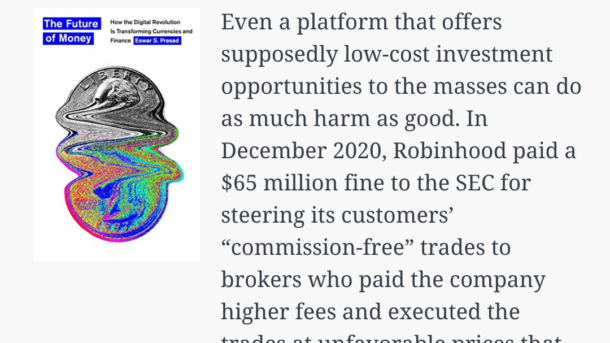The suitable role the government ought to play is indeed a complex matter. In some advanced countries, including the United States, regulation has tended to protect incumbents and limit competition in various parts of the economy. Network effects and outdated antitrust regulations enabled the ascendancy of the Big Tech firms—Amazon, Apple, Facebook, Google—that dominate their respective spaces and gobble up any competitors they cannot squash. The US financial sector does not suffer from such extreme concentration, although the United States certainly has a handful of major banks and payment providers. They do not exert the same degree of dominance as the Big Tech firms; still, stringent regulatory requirements have created barriers to entry in financial markets and kept competition in check. By contrast, lax regulation in some countries has created room for the unfettered entry of firms with innovative financial products and services that serve as a boon to households and businesses. But, as we saw in the case of China, network effects can then create titans that hinder newer entrants. India appears to have struck a salutary balance by recognizing that the public sector’s optimal role is to provide a sound foundation for market forces to build on rather than intruding directly in areas where the private sector has a clear advantage. India’s government has created an important public good—a technical and regulatory infrastructure that allows innovation by large and small firms, with a level playing field for incumbents and prospective entrants as well as protection for customers’ rights. Both advanced and developing economies face the challenge of ensuring that households and small-scale businesses are educated about the benefits and risks of financial innovations. Access to such innovations without a clear understanding and appreciation of the risks can be dangerous. Greater and easier credit availability is a boon to low-income households, but they can just as well find themselves over their heads, as happened in the United States in the subprime lending boom of the mid-2000s that presaged the housing market meltdown. Even a platform that offers supposedly low-cost investment opportunities to the masses can do as much harm as good. In December 2020, Robinhood paid a $65 million fine to the SEC for steering its customers’ “commission-free” trades to brokers who paid the company higher fees and executed the trades at unfavorable prices that caused customers to lose tens of millions of dollars. Around the same time, the Massachusetts securities regulator launched a legal action against Robinhood, accusing it of encouraging inexperienced investors to trade excessively using “gamification” strategies—online rewards for trading activity and other forms of engagement with the platform—and not putting in place safeguards to protect such investors. Sure enough, in early 2021, Robinhood became embroiled in the speculative frenzy around the shares of GameStop, a video game and electronics retailer, that eventually left many inexperienced investors on the platform nursing losses. Clearly, the structures of financial supervisory and regulatory frameworks will need to adapt and evolve quickly to manage risks that shift to new and underregulated parts of the financial system.
This is a book that does a pretty good cursory overview of all the new developments in finance and how money can look like in the future. If you’re looking for a book that just touches on several broad topics such as crypto, fintech and digital currencies, then this one is a good one.
With how rapidly fintech is growing with digital banks, BNPL, crypto and digital payments, one of the major trends is how these Fintech firms are able to provide competition to the conventional banks in certain services. While financial services are now more accessible to a wider group of people, it doesn’t necessarily mean that this is an innovation that benefits everyone. Services such as Buy Now Pay Later (BPNL) might allow for more users to have access to easy cash flow, but might also increase credit risks for groups of people who live from pay cheque to pay cheque.
Not every innovation is necessarily good, and this is something that we’ll all have to wait and see.



